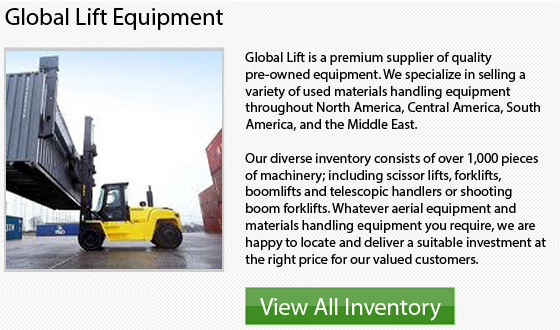
The ITA or Industrial Truck Association has determined 7 different classes of forklifts. These classifications are divided into the kind of work setting; smooth or rough surfaces, outdoors, indoors and narrow aisle; by the type of engine; whether the operator is standing or sitting down; and lastly the equipment characteristics, regarding the maximum grade and tire type. Some of the classes are further sub-divided by operating characteristics. Below are the following forklift categories:
Class 1 Forklifts: these machines include electric motor trucks which use either air filled or pneumatic tires or cushion tires. The Class 1 lift trucks also consist of 4 lift codes, or subcategories which are:
Lift Code 1: Stand-up, counterbalanced rider model.
Lift Code 4: 3-Wheel electric sit-down units.
Lift Code 5: Counterbalanced rider, cushion tire sit down tires.
Lift Code 6: This grouping included pneumatic tire models, counterbalanced rider, and sit-down rider units.
Class 2 Forklifts: Class 2 forklifts consist of narrow aisle electric trucks with solid tires.
Class 3 Forklifts: The class 3 lift truck will comprise all hand/rider trucks fuel and electric based with solid tires.
Class 4 Forklifts: The IC or internal combustion models make up Class 4 forklifts. These are sit down rider forklifts with cushion tires. Generally, they are suitable for applications on hard surfaces and indoor application.
Class 5 Forklifts: Internal Combustion sit down rider units outfitted with pneumatic tires make up Class 5 lift trucks. Normally, these units are great for working areas with significant inclines or on rough surfaces outdoors.
Class 6 Forklifts: Class 6 forklifts would consist of internal combustion powered or electric units. These ride-on models could tow at least 1000 pounds. This specific category is designed and engineered to tow loads as opposed to lift it.
Category 7 Forklifts: Class 7 only included rough terrain units with pneumatic tires. The Class 7 forklifts are powered by diesel engines and are almost exclusively utilized outdoors.
These categories were designed to keep the large field of lift trucks organized and separated. In order to get their work completed, different working environments rely on different classifications. Forklifts are rather specific in their lifting and loading capacities. Their different engine types and tire types are made for specific applications. To be able to choose the right forklift to suit your needs and to complete your jobs, do some research to determine exactly what you will require from your specific model. By talking to some respectable dealers and making time to investigate all your choices, you would be able to choose the right machinery.